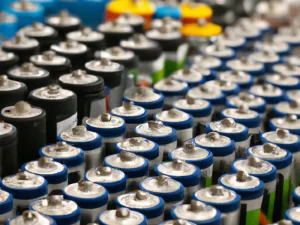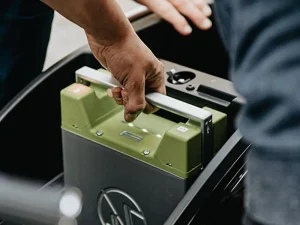Lithium batteries dominate the world with their latest technology. They are extensively used worldwide and are transported from one location to another. Have you thought about how those explosive batteries are transported securely? UN 38.3 testing for lithium batteries is the reason behind their safe transport.
As you know, lithium batteries have high energy potential. Minor mishandling could pose serious issues, such as explosions. But all thanks to UN 38.3 testing, which ensures the safe transportation of these batteries. As a result, these batteries are shipped worldwide safely. However, the question is, how does UN 38.3 testing ensure safety?
I know that many people don’t know how UN 38.3 testing works. However, understanding these tests is crucial if you’re in the battery business. If you don’t comprehend this testing, don’t worry! This comprehensive guide will clear all your doubts regarding this topic. So, let’s get started.
Overview of UN 38.3 Testing System Lithium Batteries

UN 38.3 testing is a UN regulation section that ensures the safe transportation of lithium batteries. Batteries certified with Un 38.3 are very safe for shipping and transportation. This testing includes many criteria and individual tests. Lithium batteries must meet specific criteria or tests for certification.
Lithium batteries are an invention of the 19th century. They offer excellent energy storage and quick charging. You’ll find these batteries in everyday gadgets, from smartwatches to laptops. However, these batteries contain electrolytes, which contain explosive material.
This electrolyte used in batteries is generally safe. However, the battery can face low pressure, high temperature, and impact during transportation. These conditions can cause their transportation to become a challenge in distant areas. If transported carelessly, these batteries are more likely to leak or explode. However, the UN 38.3 testing comes in handy in such cases.
In 2003, the United Nations Committee introduced a regulation for testing systems. Section 38.3 addresses the safe transportation of lithium batteries. It suggests many small tests that lithium must undergo. If a battery passes all those tests, it is considered safe for transportation. The question is how those tests ensure safety.
The UN 38.3 Testing checks the battery by providing relief conditions. During shipping, batteries experience low pressure, heat, and shocks. These tests provide these conditions in a very controlled environment. During testing, the manufacturer analyzes how batteries perform under each condition.
Those batteries that don’t leak or explode during these tests are reliable. They are certified by UN 38.3 Testing. Remember, these tests include a specialized series of 8 tests for lithium batteries. All the tests are performed under the observation of expert staff. These tests ensure that batteries are safe to transport by land, sea, or air.
Detailed Breakdown of UN 38.3 Tests

Have you grasped the basics of the UN 38.3 testing system? I bet you have! As I said, these tests consist of a series of small tests. Now, let’s explore the details of each test and its importance.
1- Altitude Simulation (T1)
At high altitudes, there are high chances of electrolyte leakage. Why? Pressure decreases at high altitudes, which impacts battery liquids. Therefore, this test is performed to safely transport lithium batteries by air.
During its procedure, a scenario is created where pressure is ≤11.6 KPa. This test takes 6 hours. After this time, the battery’s leakage is checked. If any wear or tear is found, it is declared failed and sent back to the manufacturers. If the battery doesn’t leak at low pressure, it is certified as safe for transportation.
2- Thermal Test (T2)
A thermal test is done to check the temperature endurance of the lithium batteries. At very high temperatures, lithium batteries are more prone to fire explosion. At very low temperatures, electrolytes can freeze. It’s a critical test since lithium batteries can be shipped in temperature-varying zones.
To perform this test, batteries are kept in the chamber for 6 hours at 72±2℃. If the battery passes this step, it is kept at a low temperature of -40°C for 6 hours. If the electrolyte doesn’t freeze, the battery can handle the temperature. It can be transported at both high and low temperatures.
3- Vibration Test (T3)
As you know, batteries can undergo vibration during transportation. Therefore, This test verifies the battery’s ability to endure vibrations. In simple words, This test evaluates how lithium batteries endure vibration during shipping. Remember, lithium batteries consist of electrolytes.
Vibration and movement in the battery can cause leakage issues. But how is this test performed? Artificial vibrations are created with a frequency range from 7 – 200 Hz. Lithium batteries are exposed to these vibrations. If no leakage or wear and tear is present, the battery is considered passed in the vibration test.
4- Shock Test (T4)
Many people consider vibration and shock tests to be the same. But that’s untrue, as both tests check lithium batteries differently. A shock test checks a battery’s ability to endure shock or impact during transportation. This test is carried out by dropping different weights on the battery, which is also dropped from a distinct height. Keep in mind that this testing is done via shock testing machines.
5- External Short Circuit Test (T5)
External short circuit shows how lithium battery behaves in case of short circuit. You may wonder how short circuits occur in transportation. Sometimes, batteries come in contact with conductive material, which can cause short circuits. However, the chances of these short circuits are very meager.
To perform this test, a short circuit condition is created in a Short Circuit Tester. Both battery terminals are directly connected at 55°C for one hour. After this time, leakage and deterioration of the battery are checked. If the battery remains stable, it is considered safe against short circuits.
6- Impact/Crush Test (T6)
This test checks the physical strength of lithium batteries. During transpiration, many batteries are shipped together. So, the chances of their collision remain high. Imagine an accident of a truck carrying lithium batteries.
In such a case, the battery explodes if not tested for safety. During this test, the battery is crushed between two weights up to a limit. The battery has to maintain its physical shape during this testing. If it fails to do so, it is considered a failure. Remember, this test is done in specialized impact test chambers.
7- Overcharge Test (T7)
An overcharge test ensures the double safety of lithium batteries. As you know, each battery has a specific charging limit. But sometimes, unintentionally, it gets overcharged. Therefore, this test checks the ultimate limit of overcharging. During this test, the battery is charged for several hours beyond its limit.
This overcharging test is also handy for the safe transportation of the batteries. A slight jerk or collision will cause fire or explosion if the battery is sensitive. This overcharging is done to check whether the battery heats up. If the battery doesn’t heat or degrade during overheating, it’s safe for transport. In this test, the battery must not show a rupture or fire explosion to declare the test.
8- Forced Discharge Test (T8)
Discharging is a common phenomenon in lithium batteries. However, over-discharging causes serious hazards. Imagine aggressive discharging during transportation. Low-quality batteries that don’t undergo testing can explode due to this. The jerk, vibration, and high temperature can make discharging dangerous.
Therefore, this forced discharging test is conducted. An external connection pushes a Li battery to discharge beyond limits. If the battery does not heat up during aggressive discharging, it is considered safe for transportation. Thus, you don’t need to worry if the battery gets discharged during shipping.
Importance of UN 38.3 Testing System

In the past, lithium batteries were considered dangerous, which reduced their sales. The UN 38.3 testing system brought them back to their position. Each step of this testing system is crucial to ensure 100% safety. Apart from this, many other reasons make this system top-notch. Let’s discuss them briefly.
1- Protects Public Safety
Lithium batteries are made of explosive materials. A battery entering the market without testing can create serious life hazards. Hence, the UN 38.3 testing system makes lithium batteries safe for handling. Batteries are passed through a chain of tests, making them secure for transportation.
2- Ensures Environmental Protection
The UN 38.3 testing system ensures that batteries do not leak. This leakage can pose serious issues. For example, leakage can ignite a fire in the batteries during transportation. Moreover, it can also affect our environment. Batteries tested with UN 38.3 are very safe. The chances of their leakage during transportation are meager.
3- Ensures Product Reliability and Quality
A battery passed through such a strict series of tests gives peace of mind regarding quality. As mentioned above, the batteries are crushed, dropped, and overheated. When a battery withstands all those harsh challenges, it is considered 100% durable. In simple words, the UN testing system gives a warranty for the quality of products.
What Happens if a Battery Fails UN 38.3 Testing?
If a battery fails the UN 38.3 testing, it is declared unsafe for transportation. It is then sent to the manufacturers for review. This testing laboratory also provides a summary of failure. Now, manufacturers are responsible for analyzing the battery’s structure and design.
Once the company removes all battery defects, it is returned for retesting. Again, it will have to go through all those testing series. If the battery fulfills that criteria, it is given clear certification. However, this retesting can be disadvantageous for the company. Because it consumes time, creates a sales gap, and increases costs.
Frequently Asked Questions
How long does UN 38.3 take?
Each test takes a different period. Moreover, it also depends on laboratory conditions and staff availability. However, the estimated time required to complete the whole series of tests is 4-6 weeks.
What is the UN 38.3 battery test summary?
The laboratory provides the company with the test summary. It includes complete information about each test along with results. The summary also mentions reasons for failure if a battery fails any test. This makes it easy for manufacturers to remove defects.
What are the pass criteria for UN 38.3?
Batteries that do not affect during testing are supposed to be passed. The pass criteria involve:
- No leakage at high altitudes
- Battery not deteriorating with vibrations
- No fire explosion with temperature fluctuations.
- The physical strength of the battery is also strong enough to withstand heavy shocks.
Conclusion
Lithium batteries are prevalent and power our daily life gadgets. The UN 38.3 testing system ensures these batteries’ safety during shipping or transportation. This testing system consists of a chain of tests. For example, vibration, shocks, thermal, and altitude tests. All these tests are performed under specific conditions.
Lithium batteries must pass these tests for safe transportation. If any battery fails the test, it is declared defective or unfit for transportation. It is then sent back to the company for improvement. Lithium batteries undergo these tests again and again until they pass. Batteries without 38.3 certification are not reliable and safe in the long run.